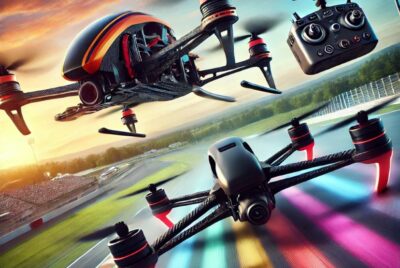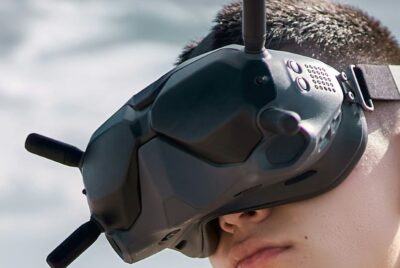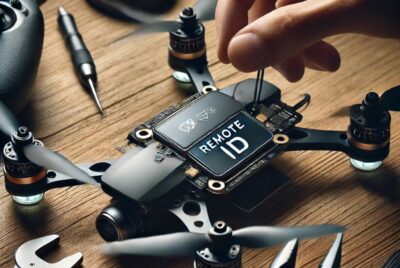FPV Drone Kits: Build Your Own High-Performance Racing Drone
Hey there! Some links on this page are affiliate links which means that, if you choose to make a purchase, I may earn a small commission at no extra cost to you. I greatly appreciate your support! Please see our Disclosure to learn more.
Introduction
First-Person View (FPV) drone racing has exploded in popularity in recent years, attracting pilots from all walks of life who are drawn to the thrill of high-speed, immersive flying. While ready-to-fly (RTF) drones are available, many enthusiasts prefer to build their own custom racing drones using FPV drone kits. These kits offer the perfect balance of customization, performance, and affordability, allowing pilots to create a machine that perfectly suits their needs and flying style. In this article, we’ll explore the world of FPV drone kits, covering the benefits, components, and tips for building your own high-performance racing drone.
The Thrill of Building Your Own FPV Drone
Building your own FPV racing drone is an adventure that combines technical skill with pure adrenaline. Whether you’re new to the hobby or a seasoned pilot, assembling a custom FPV drone from a kit offers a deeper connection to your machine.
Why Choose an FPV Drone Kit?
Building an FPV drone isn’t just about the end result—it’s about the journey. Here’s why drone enthusiasts prefer kits:
Personalization & Creativity
One of the primary reasons pilots choose to build their own FPV drones is the ability to customize every aspect of the machine. From the frame and motors to the camera and video transmitter, building your own drone allows you to select components that best suit your needs and preferences. This level of customization enables you to create a drone that is perfectly tailored to your flying style, skill level, and budget.
Performance Optimization
FPV drone kits often include high-quality, performance-oriented components that are designed specifically for racing. By selecting the best parts for your build, you can create a drone that is faster, more agile, and more durable than many off-the-shelf options. Additionally, building your own drone gives you a deeper understanding of how each component works together, allowing you to fine-tune and optimize your machine for peak performance.
Mastering Drone Mechanics
Constructing your drone offers hands-on experience, helping you understand how each part works and making future repairs easier.
Cost Savings
While building an FPV drone from a kit requires an initial investment, it can often be more cost-effective in the long run compared to buying a pre-built drone. Kits allow you to prioritize your spending on the components that matter most to you, and you can upgrade individual parts as your skills and needs evolve over time. Furthermore, building your own drone gives you the knowledge and skills to repair and maintain your machine, saving you money on service and replacement costs down the line.
Essential Components of an FPV Drone Kit
To complement your racing strategy, understanding your drone’s components is crucial. Check out our in-depth analysis of racing drone parts, Drone Racing Components – An In-Depth Guide, to optimize your build for peak performance.
A typical FPV drone kit includes the following essential components:
Frame
The frame is the backbone of your FPV drone, providing the structure and durability needed to withstand the rigors of racing. Frames come in a variety of sizes, materials, and configurations, each with its own strengths and weaknesses. Carbon fiber frames are popular for their strength and lightweight properties, while aluminum frames offer durability and affordability.
Motors and ESCs
Motors and Electronic Speed Controllers (ESCs) are responsible for powering your drone and providing the thrust needed for high-speed flight. Brushless motors are the standard for FPV racing, offering superior efficiency, power, and longevity compared to brushed motors. ESCs regulate the power delivered to the motors and are often chosen based on their compatibility with the motors and flight controller.
Flight Controller
The flight controller is the brain of your FPV drone, responsible for processing pilot inputs, controlling the motors, and managing other essential functions like flight modes and failsafe protocols. Popular flight controllers for FPV racing include the Betaflight, Kiss, and FlightOne controllers, each with its own unique features and user interface.
FPV Camera and Video Transmitter
The FPV camera and video transmitter are what allow you to see from your drone’s perspective in real-time. Cameras for FPV racing are typically small, lightweight, and offer low-latency performance to minimize video lag. Video transmitters come in various frequencies and power levels, with 5.8GHz being the most common for racing.
Radio Receiver
The radio receiver is responsible for receiving control signals from your transmitter and relaying them to the flight controller. Receivers come in various form factors and protocols, with SBUS and Crossfire being popular choices for their reliability and range.
Batteries and Charger
Batteries power your FPV drone, and selecting the right battery is crucial for maximizing flight time and performance. Most FPV racing drones use LiPo (Lithium Polymer) batteries, which offer high discharge rates and power density. A compatible charger is essential for safely charging and maintaining your batteries.
How to Choose the Right FPV Drone Kit for You
Selecting the right kit depends on your experience, flying style, and budget. Here’s what to consider:
Experience Level
If you’re new to FPV drone building, look for kits that offer detailed instructions, pre-soldered components, and beginner-friendly features. More advanced kits may require additional soldering and assembly skills but offer greater customization options and performance potential.
Flying Style
Consider your preferred flying style when choosing a kit. Are you primarily interested in racing, freestyle, or long-range flying? Different kits may be optimized for specific flying styles, with features like more durable frames for freestyle or longer-range video transmitters for long-range flying.
Budget Considerations
FPV drone kits come in a wide range of prices, from entry-level options to high-end, professional-grade kits. Determine your budget and look for kits that offer the best value for your money, prioritizing components that have the greatest impact on performance and durability.
Pro Tips for Building Your FPV Drone
To ensure a smooth building process, keep these tips in mind:
Organize Your Workspace
A clean area reduces the chance of losing small parts and makes assembly easier.
Follow Instructions Carefully
Building an FPV drone requires attention to detail and careful following of instructions. Take your time, read the manual thoroughly, and double-check each step to ensure proper assembly and configuration.
Use the Right Tools
Having the right tools can make the building process much smoother and more enjoyable. Essential tools include a soldering iron, multimeter, hex drivers, and small pliers. Invest in quality tools that will last and make your building experience more efficient.
Test Components Before Assembly
Before soldering or mounting components, test each part to ensure proper function. This includes checking motor rotation, testing video transmission, and verifying radio receiver communication. Catching any issues early can save you time and frustration down the line.
Manage Wires and Cables
Proper wire management is crucial for a clean, durable, and high-performing build. Use zip ties, heat shrink tubing, and cable sleeves to organize and protect your wiring. Ensure that wires are securely connected and routed away from moving parts like propellers.
Calibrate and Tune Your Drone
Once your drone is assembled, take the time to properly calibrate and tune your machine. This includes calibrating your ESCs, setting up your flight controller, and tuning your PID (Proportional, Integral, Derivative) values for optimal flight performance. Many online resources and communities can help guide you through this process.
Practice Flying in a Simulator
Before flying your newly built FPV drone, practice in a simulator to familiarize yourself with the controls and develop your skills. Simulators like LiftOff, VelociDrone, and DRL Simulator offer realistic physics and a variety of virtual environments to help you hone your abilities without risking your drone.
Common Pitfalls and How to Avoid Them
Even experienced builders can run into issues. Here are a few common pitfalls and how to steer clear of them:
- Skipping Pre-flight Checks: Always inspect your drone for loose parts or damaged wires before flying.
- Overloading with Accessories: Avoid unnecessary add-ons that can make your drone heavier and reduce performance.
- Neglecting Battery Safety: Follow proper charging protocols for LiPo batteries to prevent accidents and extend battery life.
FPV Drone Racing Kits:
Conclusion
Building your own FPV drone from a kit is a rewarding and educational experience that allows you to create a high-performance machine tailored to your exact needs and preferences. By understanding the components, selecting the right kit for your skill level and flying style, and following best practices for assembly and tuning, you’ll be well on your way to enjoying the exhilarating world of FPV drone racing.
As you progress in your building and flying journey, don’t be afraid to experiment, learn from others in the community, and continually push yourself to improve. The world of FPV drone racing is one of constant innovation and evolution, with new technologies and techniques emerging all the time. By staying engaged, curious, and passionate, you’ll be able to grow your skills, create incredible machines, and experience the unmatched thrill of flying your own custom-built FPV drone.
FAQs
- What is the difference between an FPV drone kit and a ready-to-fly (RTF) drone?
An FPV drone kit requires assembly and configuration by the user, allowing for greater customization and understanding of the components. RTF drones come pre-built and are ready to fly out of the box, but offer less flexibility in terms of customization and upgrades. - What tools do I need to build an FPV drone from a kit?
Essential tools for building an FPV drone include a soldering iron, multimeter, hex drivers, small pliers, and wire cutters. Additional tools like a heat gun, smoke stopper, and 3D printer can also be helpful for more advanced builds and modifications. - How much does it cost to build an FPV drone from a kit?
The cost of building an FPV drone from a kit can vary widely depending on the components and features you choose. Entry-level kits can start around $200-$300, while high-end, professional-grade kits can easily exceed $1000. On average, expect to spend between $400-$800 for a well-equipped FPV racing drone kit. - How long does it take to build an FPV drone from a kit?
The time required to build an FPV drone from a kit depends on your experience level, the complexity of the kit, and the amount of customization you undertake. For beginners, a simple build can take anywhere from a few hours to a full day. More advanced builds with extensive modifications can span several days or even weeks. - Can I use any radio transmitter with my FPV drone kit?
The compatibility of your radio transmitter depends on the receiver included in your FPV drone kit. Some kits may include a receiver that is specific to a certain transmitter brand or protocol (e.g., FrSky, Spektrum, Crossfire). However, many kits offer flexibility in receiver choice, allowing you to use your preferred transmitter with the appropriate receiver.
Final Thoughts
Building your own FPV drone from a kit is an incredibly rewarding experience that offers a unique blend of technical challenge, creative expression, and adrenaline-pumping excitement. By diving into the world of FPV drone kits, you’ll gain a deeper understanding of the technology behind these incredible machines, develop valuable skills in electronics and engineering, and join a vibrant community of passionate pilots and builders.
Whether you’re drawn to the competitive thrill of racing, the creative expression of freestyle, or the technical challenge of long-range flying, there’s an FPV drone kit out there that can help you achieve your goals and experience the unmatched exhilaration of flying a machine you’ve built with your own hands. So embrace the challenge, explore the possibilities, and get ready to soar to new heights with your very own custom-built FPV drone.







